There’s something nearly archetypal about the Long Point skiff. This 15-footer has high sides and a flat bottom, and is driven by a small four-stroke outboard motor. “It used to be that everyone had one of these things,” said the designer, Tom Hill, as we skipped across a modest chop on Penobscot Bay in mid-August. “They ranged from Maine to the Chesapeake, and were called clamming or crabbing skiffs.”Hill conceived his own version of such a skiff for fishing the waters around Provincetown, Massachusetts. He’d made frequent outings in an earlier, lighter skiff of his design. One day he found himself towing a big fish alongside that boat. The big fish attracted a school of sharks. The small skiff’s topsides were only 4mm thick, and the sharks were bumping the hull. That set Tom Hill to thinking about bigger boats. “To make a long story short,” he said, “we decided we needed a larger boat with higher sides.” (Hill all but defined lightweight boatbuilding in the 1980s. The cover of his book, Ultralight Boatbuilding, pictures him holding aloft a double-paddle canoe on the tips of the fingers of his right hand.)Here’s how Hill describes the Long Point’s design brief on his web site: “I wanted a flat bottom skiff that would draw a minimum amount of water to allow us to negotiate the Pamet Harbor at low tide and also be good for fishing the flats and marshes. She also needed to be deep and have a high bow for trips offshore, 15 miles from home.”
Join The Conversation
We welcome your comments about this article. To include a photo with your remarks, click Choose File below the Comment box.


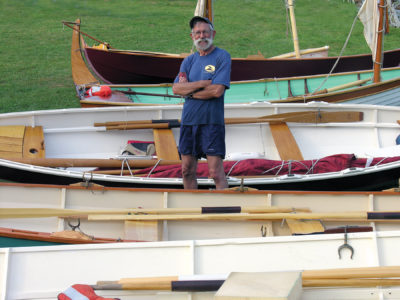
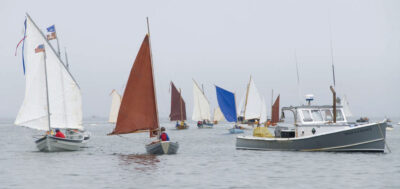
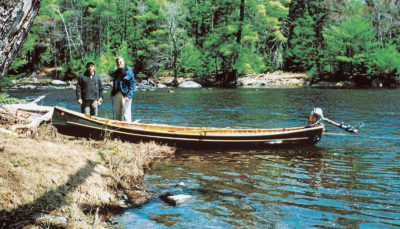
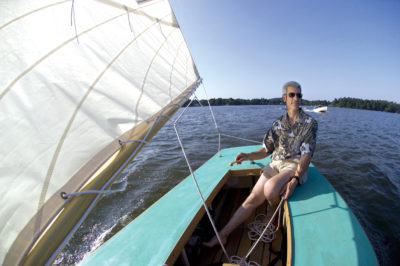
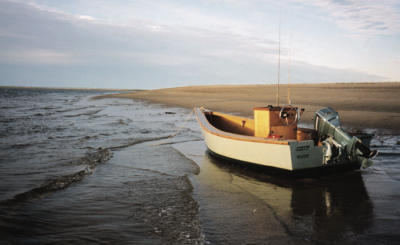
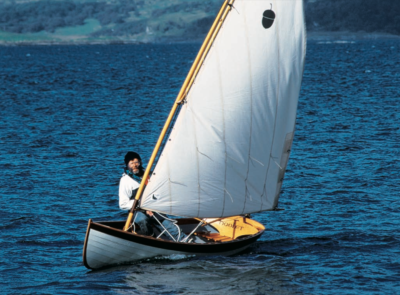
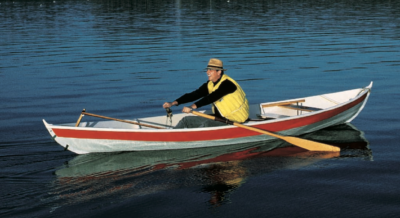
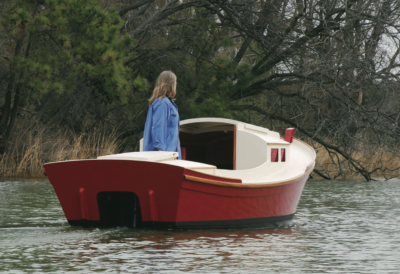
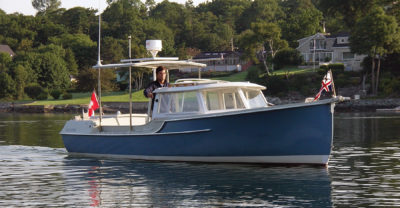
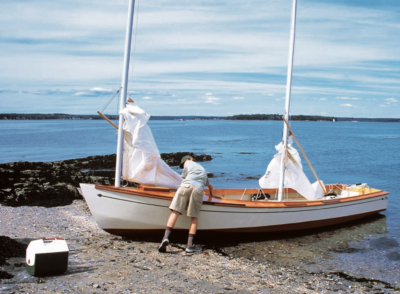


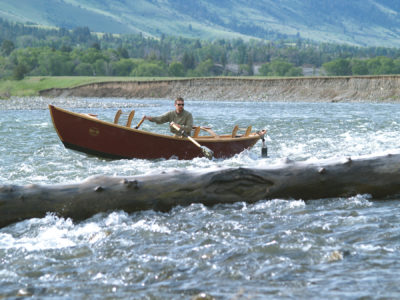
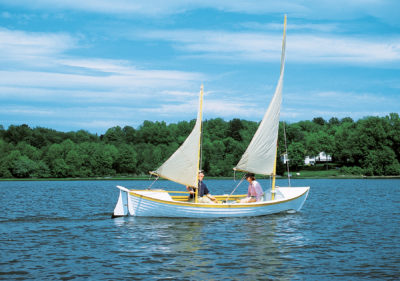

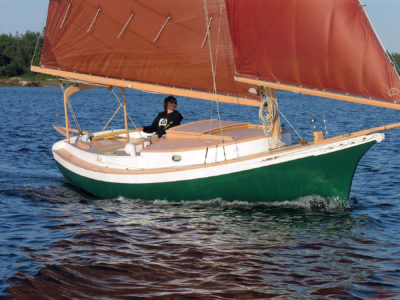
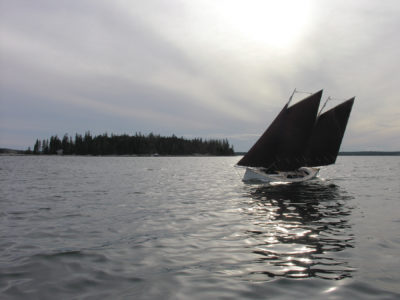
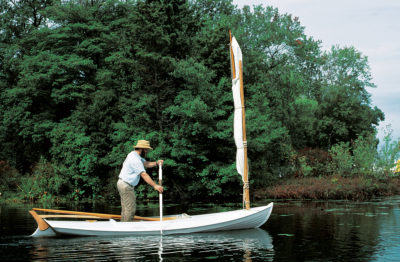
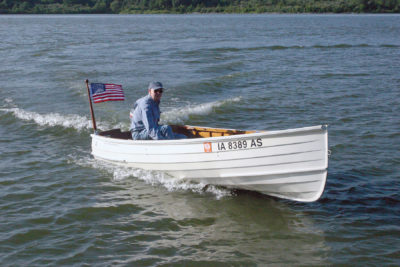
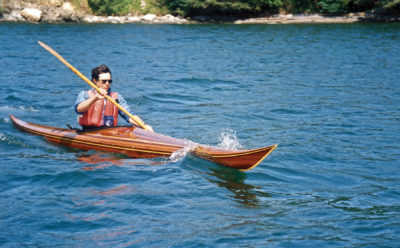
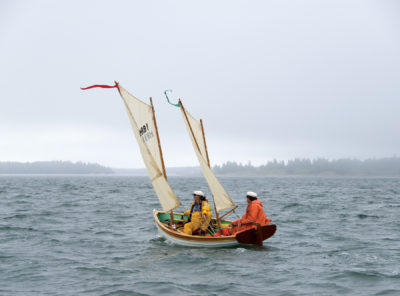
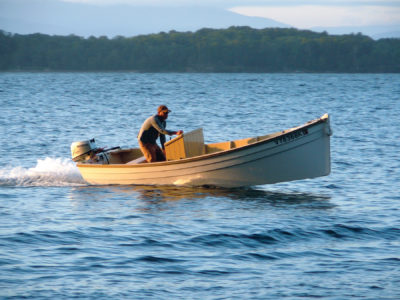
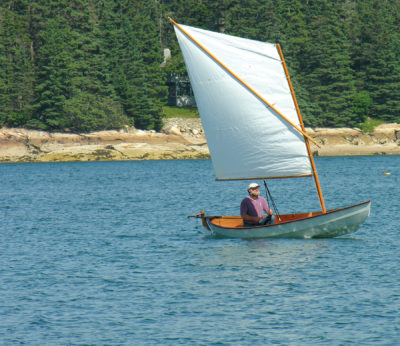
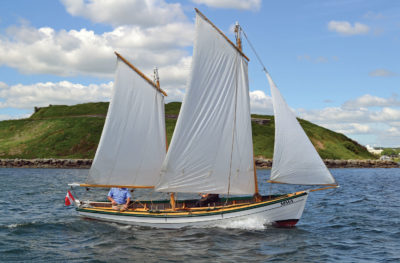

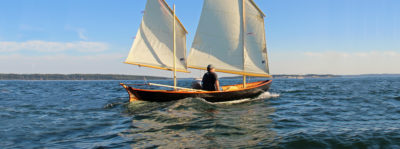
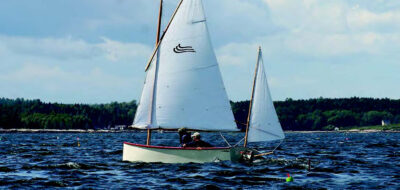
I built a Long Point about 18 years ago, as quick and dirty as could be done, using exterior plywood and house paint. The plan was to run it around Plum Island Sound for oystering and getting to sandbars for fishing, then let it fall apart when I finished a cruising sailboat. Eighteen years later, my grandson is still scooting around Great Bay in New Hampshire in the boat, now with a center console so you can see over the bow. Great boat. Simple as can be yet classic workboat looks. Wonderful design.
The flat-bottomed skiff is a badly underrated type. In the right environment it can give one more value and more fun for the money than almost any other type of boat. When I was a boy in the 1950s, Narragansett Bay was full of outboard-powered “quahog” skiffs. The Long Point Skiff is a beautiful and more modern example of the type.
In my 60s, when I had time to build a boat, I chose Chesapeake Light Craft’s Peeler Skiff kit (http://cumulus.aunt-mary.net/images/peeler/), another flat-bottomed skiff using modern materials and one of today’s light and efficient outboard motors. Five years later, it has become a much-used family boat moored in Wickford’s Fishing Cove behind our daughter’s home. We use it for fishing on Narragansett Bay, picnicking, and just messing about. It’s been the smallest boat I’ve owned – and the most fun. Great work, Tom Hill!
From my research, and experience, there is no “garboard plank” on a hard-chine hull. I’ve always heard it described as the “chine plank”; maybe I’m wrong.
This is the boat I’ve been looking to build. It fits everything I’ve been looking for. I’m having trouble finding a source for the plans. I hope this comment could get to Tom Hill. It seems like maybe he has shut down his website. Any help would be greatly appreciated.
Karl
Can the hull be lengthened?
Thank you for this spotlight. This boat fills the exact niche that I am looking for as well.
Like a previous poster, unable to make contact with the designer to buy a set of plans at this time though.
I’ve been looking high and low for a Casco Bay striper boat, student lobster boat, Maine Island Trail boat. Lots of good designs, but most are over/under built for our current needs. This one (or a Tollman skiff) seem to be right on the money!
I like the lines, and really like the clean cockpit sole w/no traverse frames inside to trip on/gather crud. At 15′, how much does she weigh?
As of today, it appears that Tom Hill’s website (http://tomhillboatplans.com/) is up and plans are available.
Hallo Tom,
I am a boatbuilder from Norvay, I am building a Long Point Skiff, not in plywood, but in Norwegian pine and with teak transom and the front stem, the frames are made from teak also from old teak doors and windows.
All the teak materials are from doors and windows.
I am nearly ready with her and in a short time will put her into the water.
Some input from Norvay